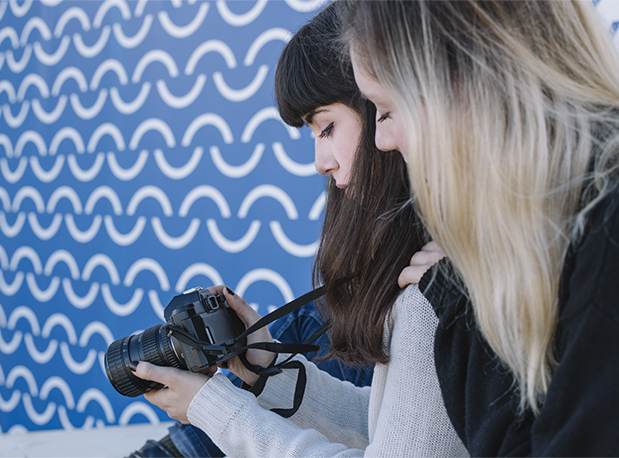The ENSACF is a melting pot of architectural cultures.
Openness is one of its essential values.
Open to the world
It is said that travel in one’s youth is formative, but for students of architecture it is also formative, teaching them about otherness, working with new scales and the history of urban planning. The ENSACF has extensive international relations that reflect its desire to expose students to the reality of an ever-changing and globalised world, to enable them to shift their gaze to the outside world and see it in perspective compared to the world closer to home: ENSACF and its territories. In this way, mobility gives structure to their training; it opens up new possibilities and helps construct each student’s professional and personal ambitions.
And, of course, travel and discovery work both ways: ENSACF students (1st year Master’s and 3rd year Bachelor’s) have the opportunity to spend a term or a full academic year overseas, and the school also hosts students from abroad.
Agreements have been put in place between institutions at a European level as part of the Erasmus scheme but also beyond Europe’s borders. The ENSACF has 8 Erasmus partners (Germany, Belgium, Spain, Greece, Iceland, Italy, Portugal and Romania) and 10 partners outside the European Union (Argentina, Armenia, Bolivia, Brazil, Canada, Chile, United States, Mexico, Peru, Switzerland and Uruguay). The school hopes to develop exchanges with Scandinavian countries, Sweden in particular) and strengthen its collaboration with North America (US and Canada).

Travel opportunities also come in the form of mandatory study trips and European workshops run as part of the IACOBUS programme.
Over the years, the ENSACF has continued to improve its international policy and the quality of the exchanges put in place and to consolidate these mutually enriching experiences. Teaching staff play a key role in mobility, and every effort is made to ensure incoming students feel at home and can quickly integrate.
Incoming students
/ Since the 2000s, 300 overseas students have spent a term or an academic year at the ENSACF (from countries such as Romania, Spain, Chile, Greece, Bolivia, Mexico and Canada).
/ French lessons are made available to all incoming students: one week of intensive lessons (6 hrs per day) upon arrival before the academic term begins. These lessons continue throughout the year (3 hrs per week).
/ 2 welcome days are held following the week of intensive lessons to enable students to get to know the city of Clermont-Ferrand and the surrounding region as well as their new classmates.
/ A partnership with the ESN WorldTop association is currently being put in place. WorldTop ESN welcomes and accompanies international students visiting Clermont-Ferrand. This includes picking them up at the train station or airport, as well as organising cultural, recreational and sports events. Every Tuesday evening at Bar d’O (5 Place de la Victoire), a social event is held for visiting students from the four corners of the globe. This is an opportunity to share their international experience and introduction to life in Clermont-Ferrand.
/ In order to make things easier for incoming students, particularly when it comes to finding accommodation, studios and flat-sharing options are available at the CROUS des Lauréats residence.
Outgoing students
/ Each year, around 45 ENSACF students (L3 and M1) participate in international mobility programs, with around 50% travelling within Europe and 50% outside Europe.
/ Students can also decide to travel as “Free Movers”, which means they choose their own destination, complete the necessary application and look after all administrative procedures themselves (this often involves high registration fees at the host university).
/ There are several financial aid schemes available based on social criteria and the chosen destination:
• Région AURA
• Erasmus +
• Ministère of culture.
• CROUS
• Ville de Clermont-Ferrand
• Swiss-European Mobility Programme (SEMP) for students travelling to Switzerland.

